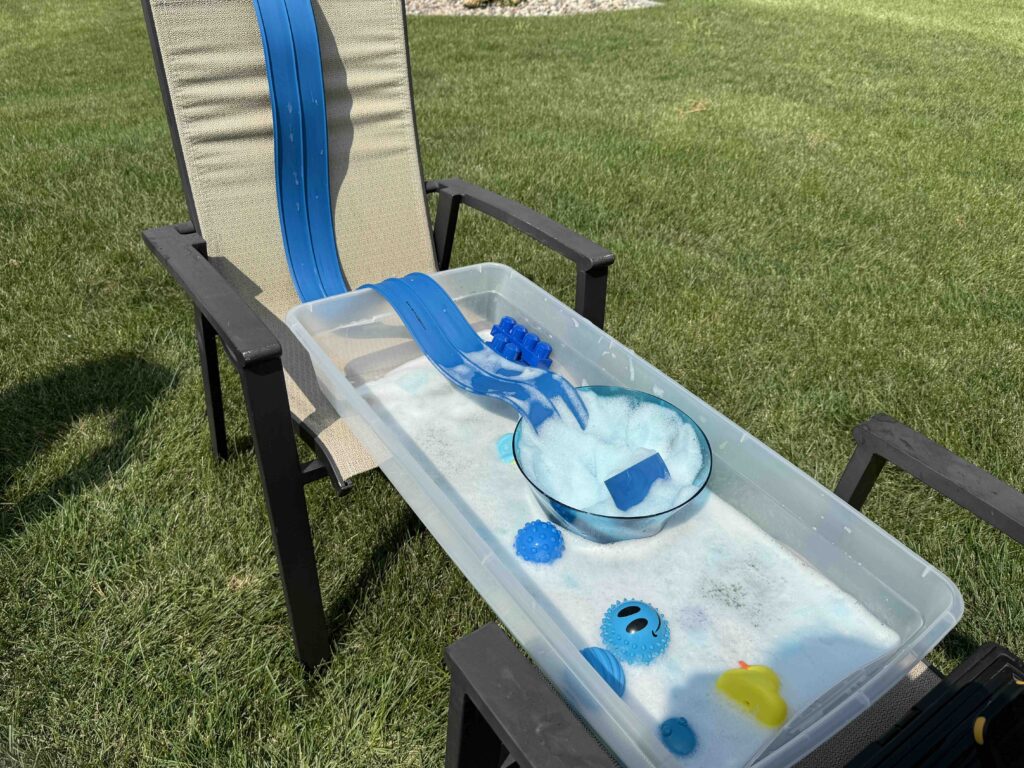
As parents, we constantly hear about the importance of play for our children’s development. But with so many toys that light up, make noise, and follow scripts, it’s easy to overlook one of the most powerful forms of play: open-ended play.
So, what is it, and why is it so crucial for your child? Let’s dive in.
Think of it as play without a rulebook. Open-ended play is all about giving children materials that have no single, “correct” way to be used.
A video game has a clear objective. A puzzle has one solution. But a pile of building blocks? That can be a castle, a spaceship, a bridge, or a long, winding road. The child is in charge, and there are no limits.
This type of play is driven entirely by a child’s creativity and curiosity, not by batteries or instructions.
When you give a child the freedom to play without defined outcomes, you’re doing more than just keeping them busy. You’re building a foundation for lifelong skills:
Boost Creativity and Imagination
When a stick can be a magic wand, a fishing rod, or a horse, your child is stretching their creative muscles. They are learning to think outside the box and create entire worlds from simple objects.
Develops Problem-Solving Skills
“How can I build this tower, so it doesn’t fall over?” “What can I use for a roof on my fort?” Open-ended play is a series of small, self-directed challenges that teach kids to think critically, adapt, and find their own solutions.
Strengthens Social and Emotional Skills
Playing with others using open-ended toys encourages communication, negotiation (“Okay, you can use the blue blocks if I can use the red ones!”), and collaboration. It also provides a safe space for them to act out scenarios and explore different emotions.
Enhances Language Development
Children often narrate their play, creating stories and dialogue for their toys. This “self-talk” is a powerful way to expand their vocabulary and practice storytelling.
Builds Confidence and Independence
In open-ended play, the child is the boss. By making their own choices and seeing their ideas come to life, they build self-esteem and a sense of “I can do this!”
You don’t need to buy expensive new toys to encourage this type of play. In fact, you probably have everything you need right now!
Never underestimate the power of a simple box. It can be a car, a house, a rocket ship, a cave, or a canvas for a masterpiece. Give them some markers or crayons and watch the magic happen.
Go on a walk and collect “treasures.” Pinecones, sticks, rocks, leaves, and shells can become ingredients in a pretend soup, characters in a story, or materials for a fairy house.
(With supervision, of course!) Old pots, pans, wooden spoons, and plastic containers are perfect for making noise, “cooking” imaginary meals, or building a drum set.
A small tub of water or a sandbox is a fantastic sensory experience. Add some cups, scoops, and funnels, and your child can pour, measure, and experiment for hours.
How can you encourage open-ended play? It’s simple: Step back. It can be tempting to jump in and show your child the “right” way to build something, but try to resist. Let them lead. Ask open-ended questions like, “That looks so interesting! Can you tell me about it?” or “I wonder what will happen if you…”
By providing the time, space, and simple materials, you give your child one of the greatest gifts: the freedom to let their own brilliant imagination lead the way.
Explore our latest blog posts for insightful tips and engaging stories that inspire and inform.
👋Hello and welcome to the world of open-ended Blu Track toy race track play. If you are brand
How Blu Track transforms play into learning What if the simplest tools held the key to boundless discovery and engagement
What’s one toy that brings instant joy and excitement to almost any child? A simple balloon! They’re bouncy, colorful, and